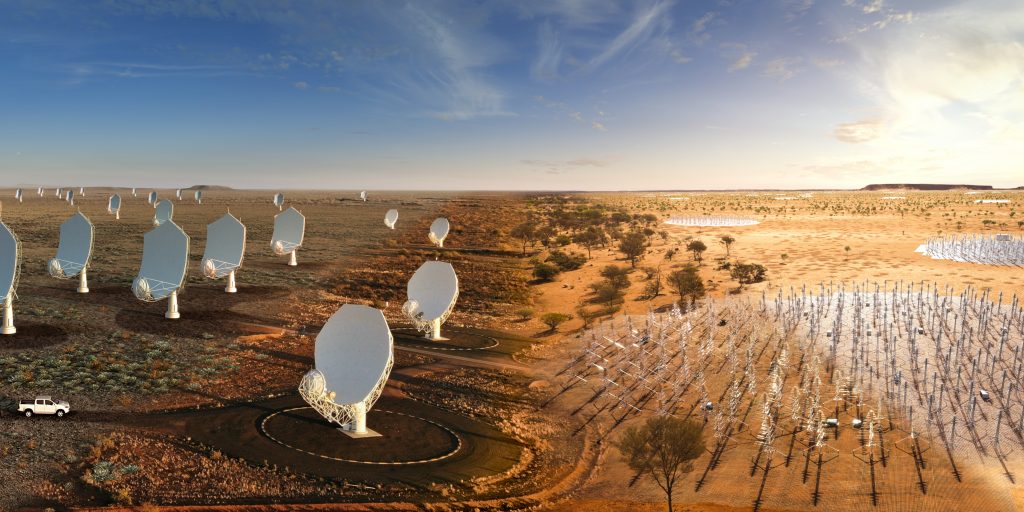SKA Observatory opens Call for Portuguese software suppliers

The SKA Observatory (SKAO) has opened a Call for Portuguese suppliers of software and IT solutions to ensure the implementation of the two largest and most complex radio telescope networks. Applications are open until September 17, and interested parties must register by September 10 to attend the information session on the Call, which will take place on September 13.
The Call is aimed at Portuguese companies, universities or research centers interested in developing services and infrastructures that will be used as the basis for the software that will guarantee the Observatory's operation, namely services for analysis, design, construction, coding, testing, verification, validation, implementation, launch, maintenance, debugging and documentation of software and computer systems, among others.
The winners of the Call will have to provide the services from December 2021 until the end of the antenna construction and installation process in July 2029. The radio telescope networks will have antennas that will occupy one million square meters of surface for data collection. The SKAO estimates that the total cost of building the two telescopes, starting operations and associated business training functions will be 2 billion euros over the 2021-2030 period.
Portugal is one of the seven founding countries of SKAO, whose first mission is to build the two largest radio telescopes in the world with sensitivity, angular resolution and survey speed far superior to current instruments. The two telescopes will be installed in South Africa and Australia, with the first consisting of 133 steerable antennas 15 meters in diameter, and the second having 131,072 periodic fixed registration antennas.
During the pre-construction phase, Portuguese participation was represented by ENGAGE SKA Portugal (Enabling Green E-Science for the Square Kilometre Array), a national radio-astronomy research infrastructure supported by the Portuguese National Roadmap for Research Infrastructures (RNIE).
More information about the SKA Observatory Call here.
Photo: ©SKAO